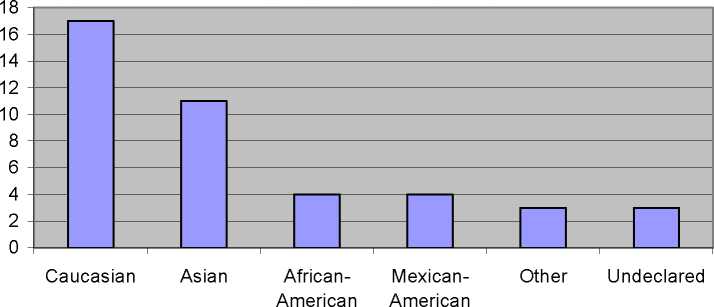Scott JR, Gunderson CA. A study of prospective ophthalmology
residents’ career perceptions.
Med Educ Online [serial online] 2003;8:9. Available from
http://www.med-ed-online.org
The Critical Factors assessed by the survey
included
• Autonomy - amount of autonomy;
• Time - the amount of time applicant
expected to spend directly seeing and caring
for patient:
• Continuity - the degree of continuity of care
anticipated with patients;
• Routine/Diversity - extent to which similar
or different tasks are preferred;
• Family/Leisure - amount of time spent with
family or in leisure activities;
• Expertise - anticipated level of expertise
(i.e., general or sharply defined);
• Income - income level compared to other
specialties;
• Innovation - amount of innovation required;
• Intellectual - specific versus theoretical
problem solving approach preferred;
• Physician Interaction - amount of time
interacting with other physicians;
• Manual/Mechanical - extent to which
manual/mechanical activities are preferred;
• Pressure - amount of pressure anticipated
dealing with crises, scheduling conflicts, and
patient decisions;
• Responsibility - degree of responsibility
expected to assume;
• Schedule - regularity of work hours;
• Security - anticipated job security and
confidence in income;
• End Results - extent to which work provides
opportunity to see end results;
• Status - rating of status compared to other
specialties;
• Computer/Technology - extent to which
computer based technologies will impact
work; and
• Family Influence - extent to which family
and personal values determine career
decisions.
Critical Factors were divided into four broad
categories: Career-oriented issues; Personal-family
issues; Financial issues; and Gender-related issues.
Career-oriented issues included time, continuity,
expertise, physician interaction, manual/mechanical,
pressure, schedule, end results, status, and
computer/technology. Personal-family issues
consisted of autonomy, routine/diversity,
family/leisure, innovation, intellectual, responsibility,
and family influence while Financial issues included
income and job security.
An initial e-mail survey was sent April 2002
with a second e-mail submission to non-responders
by June 2002. Responses by the residency candidates
(n= 42) were then compared to the responses of
practicing ophthalmologists (n = 56) who completed
the original instrument administered by the AMA.
Regrettably, no other data was available regarding
AMA practicing physician scores (e.g.,
demographics; practice patterns; etc.). A one-sample
t-test was used to compare means for critical factor
Table 1. Ethnicity Categories of Respondents (n= 42)
Ethnicity

More intriguing information
1. Non-causality in Bivariate Binary Panel Data2. THE CHANGING RELATIONSHIP BETWEEN FEDERAL, STATE AND LOCAL GOVERNMENTS
3. The name is absent
4. Better policy analysis with better data. Constructing a Social Accounting Matrix from the European System of National Accounts.
5. EXPANDING HIGHER EDUCATION IN THE U.K: FROM ‘SYSTEM SLOWDOWN’ TO ‘SYSTEM ACCELERATION’
6. The Structure Performance Hypothesis and The Efficient Structure Performance Hypothesis-Revisited: The Case of Agribusiness Commodity and Food Products Truck Carriers in the South
7. Dynamiques des Entreprises Agroalimentaires (EAA) du Languedoc-Roussillon : évolutions 1998-2003. Programme de recherche PSDR 2001-2006 financé par l'Inra et la Région Languedoc-Roussillon
8. The name is absent
9. The name is absent
10. Brauchen wir ein Konjunkturprogramm?: Kommentar